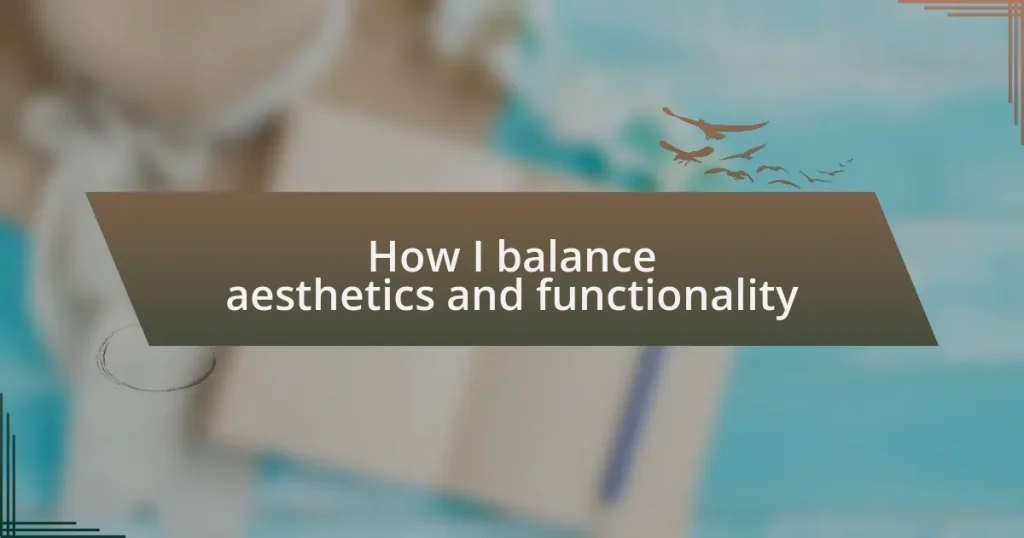Key takeaways:
- Web design blends creativity and technical skills, balancing aesthetics with usability to enhance user experience.
- User testing and feedback are crucial for intuitive design, ensuring visitors feel confident while navigating a website.
- Responsive layouts and effective use of whitespace enhance functionality and user engagement across devices.
- Consistency in design elements fosters trust and comfort, making navigation easier and strengthening brand connection.
Understanding web design services
Web design services are essential in creating a user’s first impression of a business. I vividly remember the excitement of launching my first website—it was both nerve-wracking and exhilarating. The moments leading up to that launch were filled with questions: Would users find it easy to navigate? Would it convey the right message? Understanding the nuances of web design, including layout, color scheme, and typography, can make or break that initial connection with visitors.
When I think about web design services, I often consider how they blend creativity with technical skills. It’s a fascinating dance between art and functionality. For instance, I once struggled with a client whose website was visually stunning but nearly impossible to navigate. We had to balance aesthetics with practical usability, ultimately leading to a design that not only looked great but also made users feel at ease while browsing. Does that resonate with you? It’s a challenge that requires constant evaluation and a willingness to adapt.
In essence, web design services are about crafting experiences tailored to the audience. I can’t stress enough how important it is to look at design from the user’s perspective. I recall conducting user testing on a recent project, where feedback illuminated the importance of intuitive design. People want to feel confident while exploring a site—and that’s what effective web design accomplishes. It’s not just about making something beautiful; it’s about ensuring that beauty serves a purpose.
Personal experiences in web design
I’ve had my share of memorable experiences in web design that really shaped my approach. One project stands out—a local bakery wanted a cozy, inviting website. I spent hours experimenting with warm color palettes and playful fonts, but something felt off. It wasn’t until I added a straightforward navigation bar that the true essence of the site came alive. I learned that a user-friendly layout can often be the key to making a design come together.
Then, there was that time I took on an e-commerce site. It was a gorgeous design, filled with high-resolution images, but when I tested it, the checkout process was cumbersome. I remember feeling the frustration of wanting to create a stunning interface that also performed flawlessly. After reworking the user flow, the client was thrilled to see their conversion rates soar. It reminded me that we can’t sacrifice functionality for aesthetics; they need to work hand-in-hand to create a seamless experience.
Another experience that sticks with me involved a non-profit organization. They needed a site that wasn’t just pretty, but also communicated their mission effectively. I felt a deep emotional connection to their cause. By blending engaging visuals with compelling content, we managed to convey a heartfelt message while maintaining an intuitive browsing experience. I truly believe that this balance is fundamental in web design—it’s about telling a story while guiding users effortlessly through it. How do you feel about the role of storytelling in web design?
Tips for effective web design
When considering effective web design, I often reflect on the importance of responsive layouts. I once worked on a project for an art gallery where I had to ensure the website looked stunning on both desktops and mobile devices. I remember the moment I realized a seamless experience across devices made users feel appreciated and valued. This taught me that adaptability is not just about aesthetics; it’s crucial for functionality too.
Another tip I cherish is the art of whitespace. I vividly recall designing a portfolio site for a photographer; initially, I filled the pages with content. But the moment I embraced whitespace, the photos truly shined. It not only provided breathing room but also allowed the powerful visuals to speak for themselves. Isn’t it fascinating how simplicity can enhance user engagement?
Finally, I’ve learned that consistency in design elements plays a vital role in creating a cohesive user experience. In a recent project for a startup, I focused on maintaining uniform fonts, colors, and button styles. This brought about a sense of trust and comfort, making it easier for users to navigate. Have you ever noticed how a consistent design can make you feel more connected to a brand? It’s a subtle but impactful aspect of web design that shouldn’t be overlooked.
